Working from Home During the Corona Virus
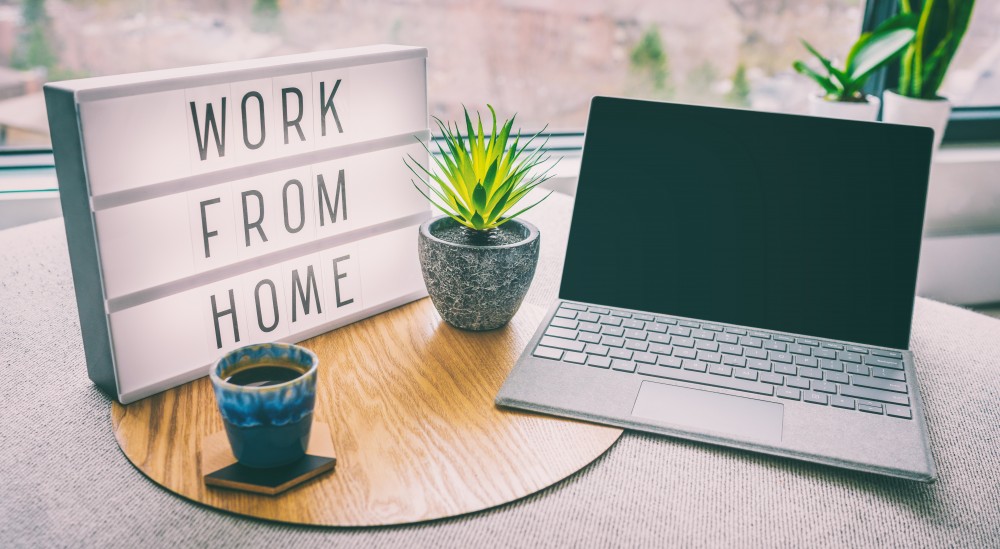 Hello and welcome back again to the ThreeSpires Physiotherapy blog where we take a look at all things physiotherapy related. This article about working from home during the Corona Virus outbreak forms the next in our series of blogs aimed at helping our patients through the Corona Virus lockdown. In this article we will take a look at working from home, some of the benefits, some of the pitfalls, how often you should have a break, how important stretching is, good posture and how you should be thinking about setting up your home office. We will also have a look at some quick and easy stretches and exercises that you can do to avoid any particular aches and problems from working from home.
Hello and welcome back again to the ThreeSpires Physiotherapy blog where we take a look at all things physiotherapy related. This article about working from home during the Corona Virus outbreak forms the next in our series of blogs aimed at helping our patients through the Corona Virus lockdown. In this article we will take a look at working from home, some of the benefits, some of the pitfalls, how often you should have a break, how important stretching is, good posture and how you should be thinking about setting up your home office. We will also have a look at some quick and easy stretches and exercises that you can do to avoid any particular aches and problems from working from home.
Work Station Set Up
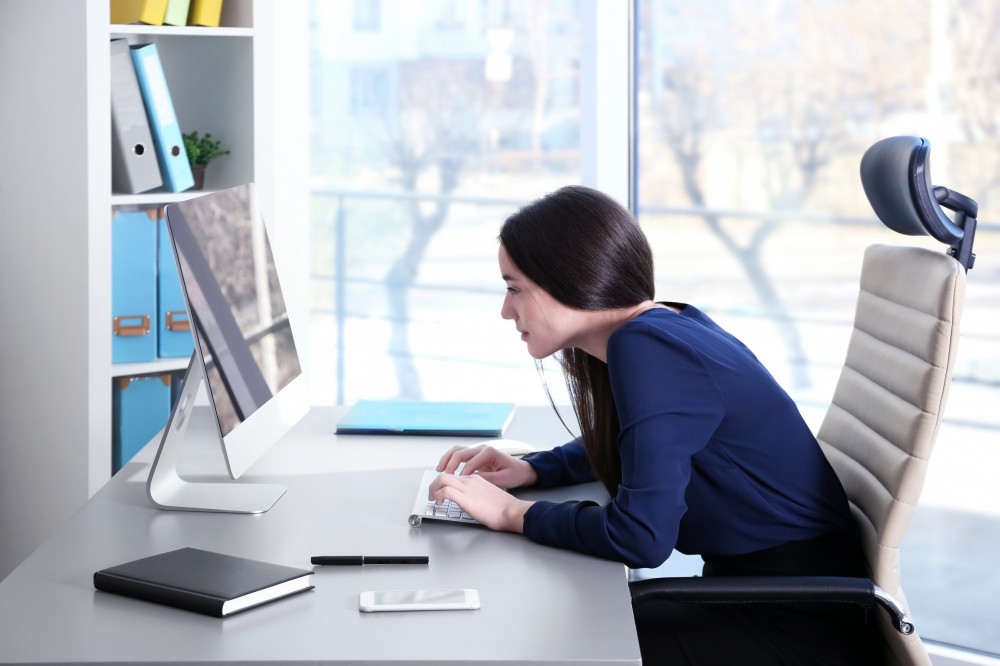 So I think when considering working from home potentially the best place to start is to think about your work station and office set up. After all this is the place and environment where you will be spending most of your time when working from home and having a good and comfortable set up here is important. Lots of patients that I see as a physio working in the community don’t make a connection between their neck and back pain and their working set up and this is always one of the first things I want to look at with them. The position and posture that you spend 8 hours a day working in will be important for how your body feels and any aches and pains that are likely to develop. Far too often because someone is not doing manual labour they do not think that it is important if they are not in a comfortable and supported posture for their work.
So I think when considering working from home potentially the best place to start is to think about your work station and office set up. After all this is the place and environment where you will be spending most of your time when working from home and having a good and comfortable set up here is important. Lots of patients that I see as a physio working in the community don’t make a connection between their neck and back pain and their working set up and this is always one of the first things I want to look at with them. The position and posture that you spend 8 hours a day working in will be important for how your body feels and any aches and pains that are likely to develop. Far too often because someone is not doing manual labour they do not think that it is important if they are not in a comfortable and supported posture for their work.
Okay, what things should you consider when thinking about your work station set up? Well let us have a look at each piece of equipment in turn, its features, which are the most important issues and also the best way in which to purchase them:
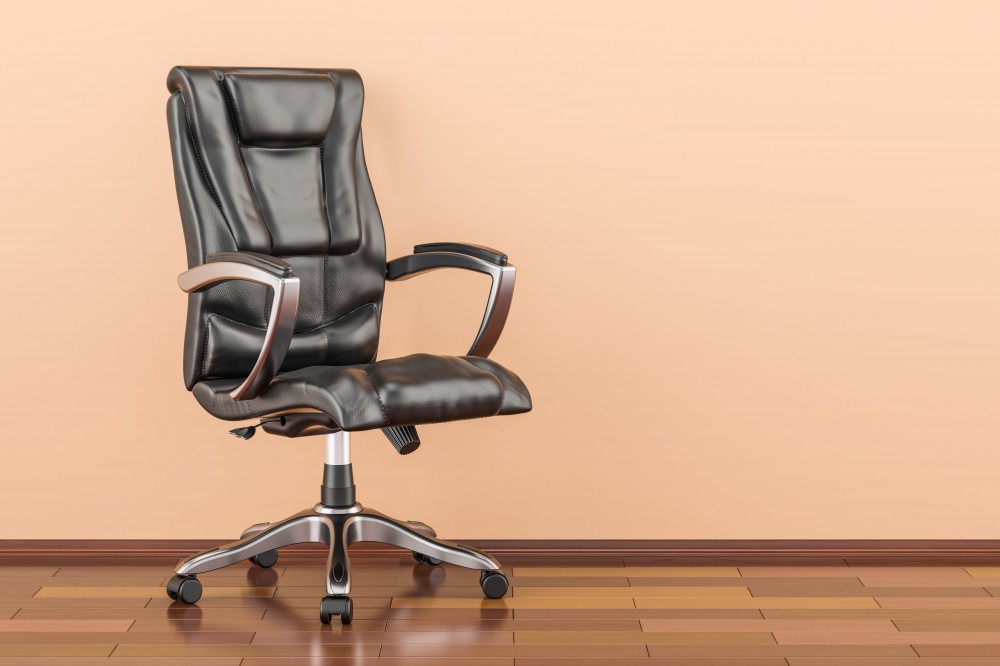 Chair: this is a vital piece of equipment for your office and home working set up and will be one of the most (if not the most) important items for ensuring that you are comfortable and able to access a good posture. Having a good, supportive and comfortable chair will make your home working day much easier and reduce the likelihood of low back and neck pain substantially. Using a non-adjustable and un-supportive chair (just because it’s what you have) is likely to end up with you in a lot of discomfort and unable to work as much as you wish and not be as productive as you need to be. So, what features should your office chair have?​
Chair: this is a vital piece of equipment for your office and home working set up and will be one of the most (if not the most) important items for ensuring that you are comfortable and able to access a good posture. Having a good, supportive and comfortable chair will make your home working day much easier and reduce the likelihood of low back and neck pain substantially. Using a non-adjustable and un-supportive chair (just because it’s what you have) is likely to end up with you in a lot of discomfort and unable to work as much as you wish and not be as productive as you need to be. So, what features should your office chair have?​
- Adjustability: firstly and potentially most importantly it needs to have some ability to be adjusted so that it can match your body shape and size. Let’s face it someone of 6 foot 6 and 18 stones is likely to need a different chair set up than someone of 5 foot 2 and 9 stones! Your chair should be able to have the height from the floor adjusted easily so that you can get your feet flat on the floor and don’t feel too much pressure behind your thighs. Next the back of the chair should be able to be moved forwards and back so as to vary the steepness and support of the back of the chair. These first two are pretty much non-negotiable and all office chairs need these in order to be altered to match your shape. The next feature is an added extra that would be nice but at a push you could do without: an adjustable lumbar support, this will give your low back some extra support and is especially helpful if you are prone to low back pain. If your chair does not have one, you should consider buying one online.
- Arm rests: these are particularly helpful if you are prone to upper back or neck pain as they will allow your upper back and shoulder muscles to relax as you type or use the computer. Having arm rests means that you will be able to avoid the temptation of resting your forearms on the desk and slumping down and forward which will tend to irritate your neck.
- Castors/Wheels: these will allow you to quickly move your chair back and forth and side to side and will stop you just sticking in the same position because you can’t be bothered adjusting your sitting position.
- Padding: having enough supportive padding is important for maintaining comfort and circulation throughout the day. Yes, it is possible to sit on a hard wooden chair and yes people did used to exactly this, however I think it is fair to say that things have moved on and having a nice comfortable, supportive and well padded chair for your office work is not a sign of weakness! It is actually a sign of good common sense.
- Comfort: when thinking about which office chair is the best for you, all of the features above are important but as everyone is built differently by far the biggest test of any chair is “does it feel comfortable?” If the answer is yes, then this is a great start and you can then start looking at specific features of the chair. However if the answer is immediately no, then you should quickly look at another chair as it is very unlikely that the features described above will change that feeling of discomfort enough.
Now, before the Corona Virus lockdown I would have quite happily advised that the only reliable way to buy a home office chair was to go out to a store and sit in a lot of chairs. This is exactly what I did recently, along with our office manager Jenny when we both went to a store and sat in a lot of different chairs and decided which ones were bets for us. All of the features described above such as an adjustable back were important and we wanted the chair to have them but we also needed to check which seat would match our body shape. It was actually very interesting seeing how different the same chair and set up felt to each person. However currently this is impossible (or at least very difficult) and as such I would guess that the only option will be to purchase a chair online. In which case I would consider getting a chair with a fair amount of adjustability as this way it is likely that you will be able to make it fit you. Next, I would think about the chair that you work in at your actual office and try and get something fairly similar to that. In all honesty, anything you get as long as it is supportive and adjustable will be better than using one of your dining room chairs or slumping on the couch!!
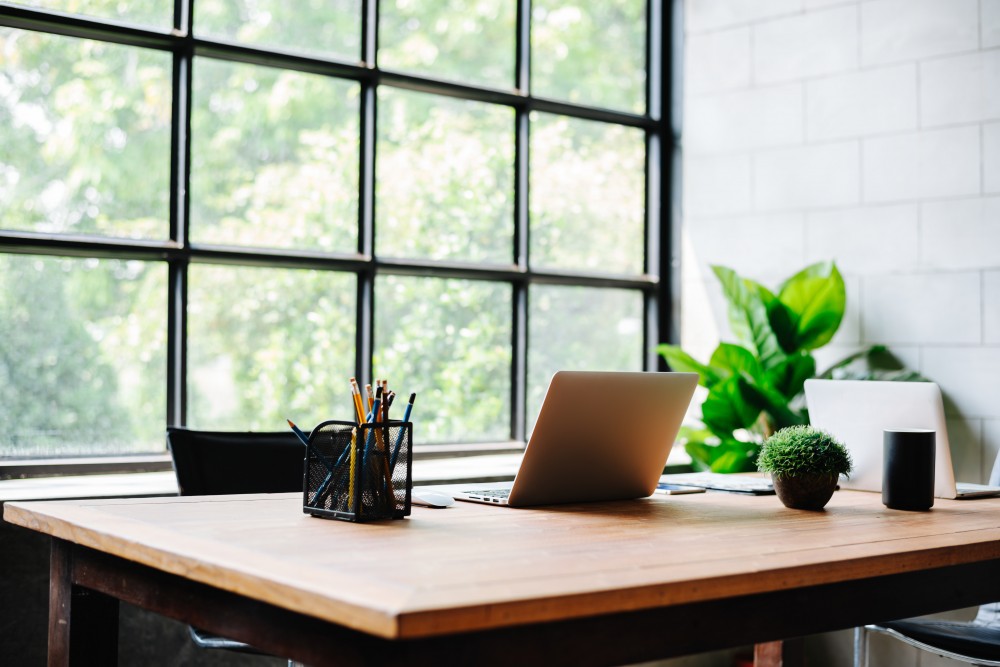 Desk: now although your choice of desk is potentially not as complex as that of your office chair it is still worth having a think about which features are important. Now, by features of the desk I don’t mean whether it is mahogany, oak or just laminate, that is really just a fashion thing and won’t affect your posture. By features of the desk I am thinking here about things like how high the desk is and how easily you can get your chair underneath it.
Desk: now although your choice of desk is potentially not as complex as that of your office chair it is still worth having a think about which features are important. Now, by features of the desk I don’t mean whether it is mahogany, oak or just laminate, that is really just a fashion thing and won’t affect your posture. By features of the desk I am thinking here about things like how high the desk is and how easily you can get your chair underneath it.
- Desk Height: so, how high should your desk be for optimal working posture? Well there is no definite answer to this but basically if working from home and considering which desk or where in the home to work from then you do need to think about the height of yoru desk and how it will affect your posture. Too small a desk in terms of height will mean that you will likely be bending forwards and down to it and too high a desk will mean that you may have your feet off the floor or have your arms and shoulders raised. Ideally the desk height should enable your feet to stay flat on the floor and your arms and shoulders to stay nice and relaxed.
- Desk Size: possibly some of this comes down to personal preference, as some people will be extremely organised and have a clear desk (tidy desk, tidy mind?) in which case they will not need as much space. If however you are like me and generally work with a desk that is organised chaos then you are likely to need more space! One key issue is that the desk should have enough depth so that your keyboard and mouse sit well and securely on the desk. Generally it is best that if you are having to use some specific items such as a landline or folders that these can be easily stored on the desk in front of you and within easy reach to stop you having to reach and turn around all day long. So your desk needs to be large enough to encompass all of these requirements (plus it needs to fit in the room you have!!)
There are a couple of questions in terms of the desk that I think it would be good to look at now and are things that I regularly get asked when discussing working from home with my patients: Firstly “can I work from the kitchen table?” The answer I generally give to that is: yes you can and I appreciate the fact that it is convenient and close to drink and food etc, however it will be very difficult to achieve a good posture at the kitchen table and basically you need to consider working in your office at a proper desk most of the day. There is little harm in working at the kitchen table a bit, just don’t do it all the time. Lastly I often get asked about working on the couch or a comfy chair with a laptop: these patients often need nothing apart from a laptop and enjoy watching a bit of TV in the background as they work. My answer here is the same as before: yes, working at the couch is fine for a bit but you should no work there too much. Realistically you need to prioritise your posture and positioning and use an office set up for most of the day.
- Computer: If you have invested in a good chair and have appropriate desk with enough space you now need to consider the machine you work on all day. This will be a crucial factor in keeping you pain free and working productively. To this end I am going to attempt to go through the pros and cons of a laptop vs a PC set up:
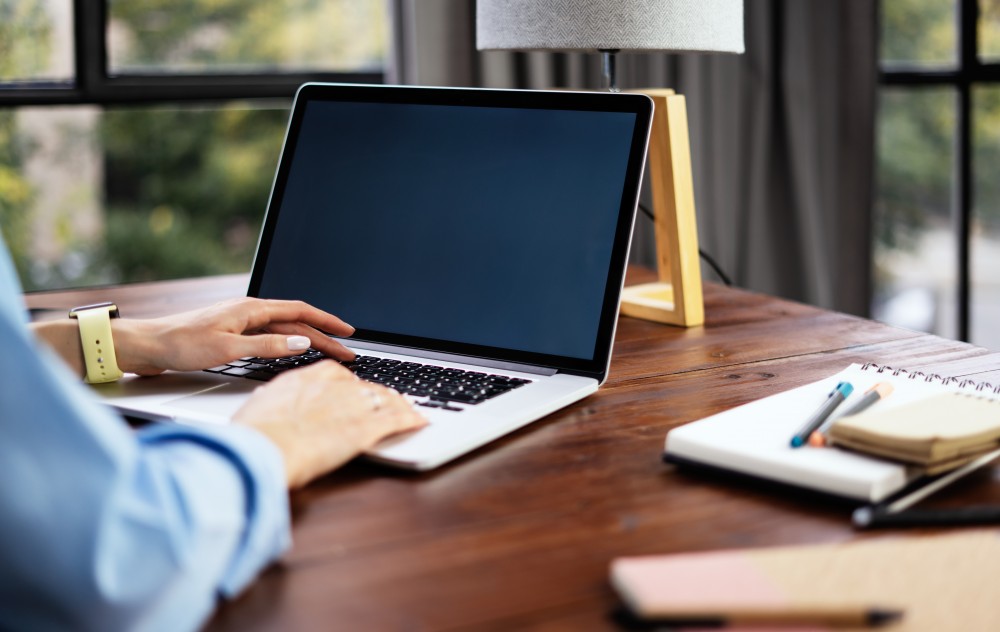 Laptop: by far this is the most common set up I see as a physio helping patients with neck and back pain. A laptop can be taken and brought back from work easily, often employers are quite happy to give their employees a laptop but are unwilling to fund a home PC. Laptops are portable and can be moved around the house easily and when you fancy a change of position they can be moved outside into the garden or in front of the TV. However, laptops are also very difficult to work on and be in a good and supported posture, they in general will have the screen too low and this encourages a head down position and also they tend to encourage forearms to be rested on a table and this in turns leads to slumping. Their portability around the home is also their major downside: by being able to be moved onto the sofa, bed or kitchen table this encourages you to spend hours working on them in a poor posture. Mostly people use a laptop without a separate mouse and keyboard – now this is okay for short stints of work but especially if you are doing a large amount of typing you really need a separate keyboard and mouse to encourage you to be in a good position.
Laptop: by far this is the most common set up I see as a physio helping patients with neck and back pain. A laptop can be taken and brought back from work easily, often employers are quite happy to give their employees a laptop but are unwilling to fund a home PC. Laptops are portable and can be moved around the house easily and when you fancy a change of position they can be moved outside into the garden or in front of the TV. However, laptops are also very difficult to work on and be in a good and supported posture, they in general will have the screen too low and this encourages a head down position and also they tend to encourage forearms to be rested on a table and this in turns leads to slumping. Their portability around the home is also their major downside: by being able to be moved onto the sofa, bed or kitchen table this encourages you to spend hours working on them in a poor posture. Mostly people use a laptop without a separate mouse and keyboard – now this is okay for short stints of work but especially if you are doing a large amount of typing you really need a separate keyboard and mouse to encourage you to be in a good position.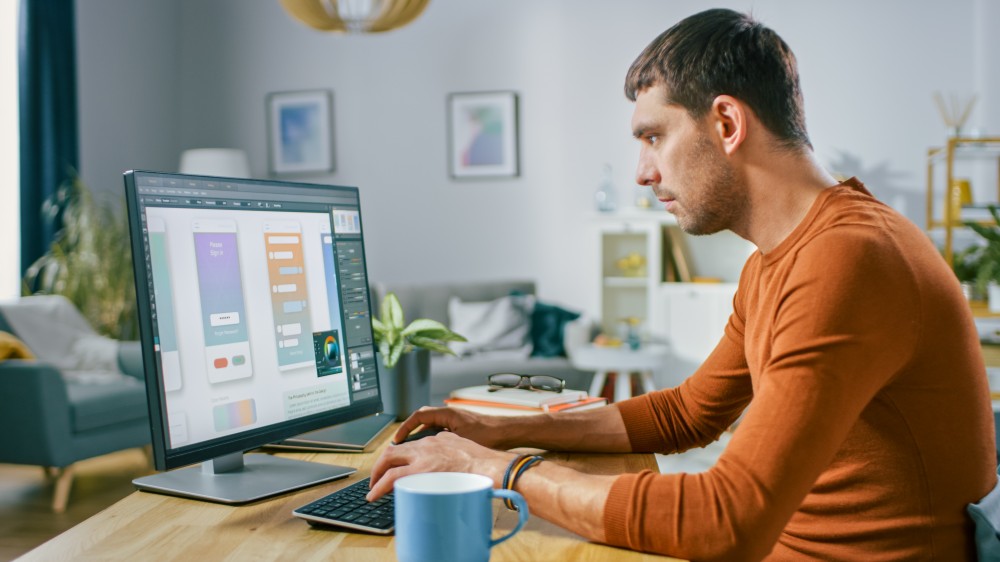 PC: In terms of encouraging a good posture, adjustability and getting your office set up adjusted to your own specific body size a PC is by far the best choice. You can easily set the screen to the recommended height and you will have a separate keyboard and mouse that positioned perfectly for you. It is not portable and therefore you can’t work on the sofa or the kitchen table and won’t be tempted to slump down and work in these places. Obviously these benefits are also negatives: the lack of portability can often make taking work back difficult and sometimes it is nice to be able to watch a bit of TV and do a bit of work.
PC: In terms of encouraging a good posture, adjustability and getting your office set up adjusted to your own specific body size a PC is by far the best choice. You can easily set the screen to the recommended height and you will have a separate keyboard and mouse that positioned perfectly for you. It is not portable and therefore you can’t work on the sofa or the kitchen table and won’t be tempted to slump down and work in these places. Obviously these benefits are also negatives: the lack of portability can often make taking work back difficult and sometimes it is nice to be able to watch a bit of TV and do a bit of work.
So, what is the answer to the dilemma: laptop or PC? Well I guess it depends upon budget. If money is no issue then you should have both. This gives you the best of both worlds, for the majority of your day you work on a PC in the office with a good set up but whenever you fancy a change of position you swap to your laptop. If this is not possible and you definitely are going to have to use a laptop then you need to invest in a separate keyboard and mouse and also have a laptop stand on your desk so that you can have the screen at the optimal height.
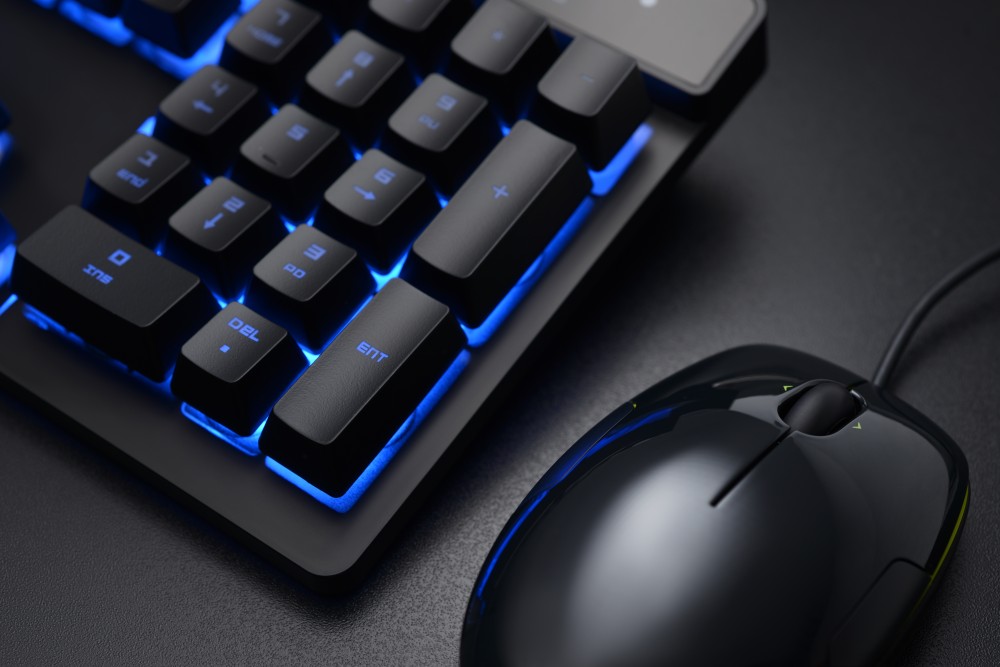 Keyboard & Mouse: these are often overlooked as being key features of any office set up when working from home, however it is important that you get a comfortable and supportive set up here. Having your wrist, hand and fingers in a nice supported position and feeling comfortable is essential for anyone doing a large amount of computer work.
Keyboard & Mouse: these are often overlooked as being key features of any office set up when working from home, however it is important that you get a comfortable and supportive set up here. Having your wrist, hand and fingers in a nice supported position and feeling comfortable is essential for anyone doing a large amount of computer work.
- Keyboard: this needs to able to be positioned close to you on the desk and in general best practice is to have a removable wrist support at the front. It is important that this is removable as some people will not be able to work with one and others will really benefit from ability to relax their wrist into a neutral position whilst typing.
- Mouse: this should feel easy to use, light to the touch and comfortable. A key feature to consider especially for anyone doing a lot of work with the mouse is having a wrist support in front of it. This will keep your wrist in neutral and relaxed and is especially helpful for anyone with carpal tunnel syndrome or for whom mouse work makes their wrist or hand ache.
- Other Office Features: okay, now we have had a think about the key features of a good office set up for working from home I think we need to consider some other issues and features that you may want to take into account:
- Phone: for some people when working from home this won’t make a difference as they only have to make the odd phone call. However, if you spend a large proportion of your day on the phone then you need to consider carefully the set up that keeps your neck in a neutral position and avoids you having to hold a phone a lot. For someone on their phone most of the day and for whom their work revolves around either answering or making calls I would suggest that some form of headset is the best option here as it will allow you to use your hands, keep your neck relaxed and your shoulders and arms relaxed. This will help you avoid neck and shoulder pain whilst working at home.
- Lighting: this again may not be that important if your room is well lit and you are generally doing your work on a screen. However if you have to actually read physical documents and pieces of paper then it is worth having a think about your light in the room. The important thing here is that you should not need to start craning your neck over the pieces of paper in order to read them. You should be able to read them easily from your normal position.
Okay, hopefully that has given you a good idea of some of the key features of a good office set up and may make working from home that little bit more comfortable for you. You will also have noticed that I have not put any links to specific pieces of equipment. This is because there are a myriad of options out there and some of the choices you need to make will be very specific to you, the purpose of this article is to give you an idea of what general factors you need to consider when working from home.
Posture:
Okay, before taking a look at what your office set up should actually look like when working from home I think it is first important to consider why it is important and what might be the posture to generally be in and are there any bad postures that you should avoid. The answer to the question about posture is fraught with controversy and difficulty as it is a subject of much debate and also quite a lot of misinformation and misunderstanding. I think it would be fair to say that there is probably no such thing as an “ideal” posture and that there are really no “bad” postures but there are some positions that you should probably avoid spending too much time in. You can probably spend some time in any position and posture that you like as long as you don’t spend too much time in that position.
The Good Posture
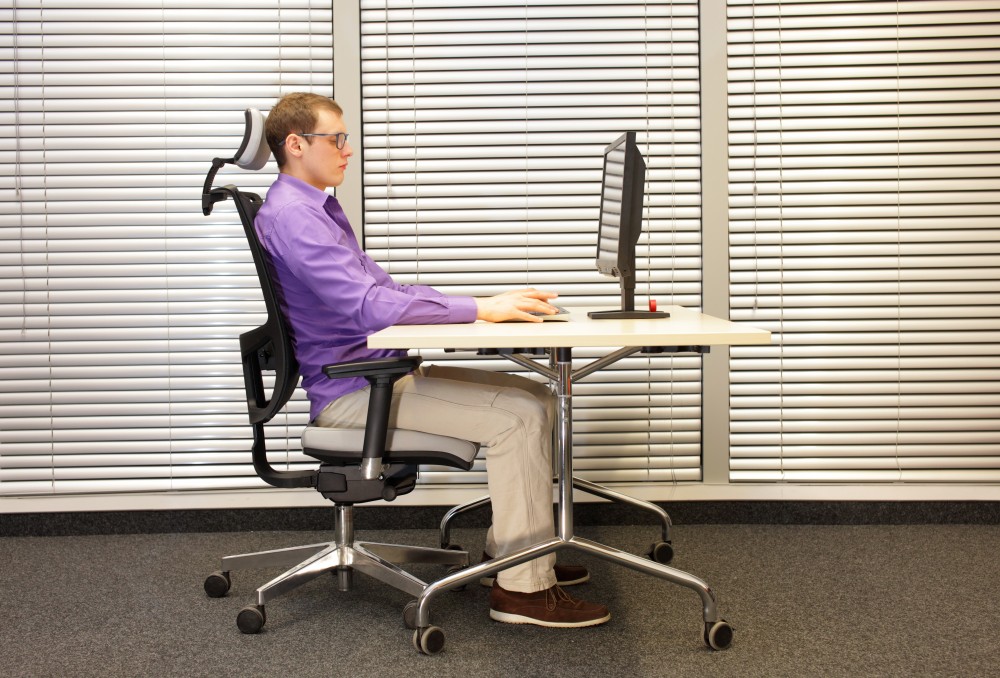 That having been said and no doubt having confused you, I think we should consider why what has been promoted as a good or ideal posture is still the position that you should aim to spend most of your time in when working. I think most people will have seen a picture of someone working in an office in a bolt upright position as shown in the picture. Most people will have dismissed this as unrealistic but before doing that I think it is valid to consider why there are some things that you should take away from this image and have a think about when working from home.
That having been said and no doubt having confused you, I think we should consider why what has been promoted as a good or ideal posture is still the position that you should aim to spend most of your time in when working. I think most people will have seen a picture of someone working in an office in a bolt upright position as shown in the picture. Most people will have dismissed this as unrealistic but before doing that I think it is valid to consider why there are some things that you should take away from this image and have a think about when working from home.
So, starting at the neck and upper body you will note that the neck is in a relatively neutral and straight position without the chin jutting forward and the shoulders are back and the upper back is relatively straight. This posture here although it will feel active (i.e. requires energy to maintain) stops the neck moving into extension and the person overloading the passive structures in the neck. It also prevents the shoulders moving forward and irritating the upper trapezius and also stops the back becoming rounded. Now, as a physio I generally tell people that it is unlikely that they can spend their entire working day looking like this in the neck and upper back area as they would likely become very fatigued. The point I make is that this is one extreme and it is important to attempt throughout the day to check how far away from this “good” posture you are. In the lower back you can see that the person is in slight extension in the lumbar spine and has the normal lordosis (concave curve) of the low back present and the hips are very slightly above the knees and the feet are flat on the floor providing support. For this area I would say that the easiest way to achieve this lordosis is to have a lumbar support in the chair and this will stop your back slumping into flexion, losing that lordosis and irritating the discs in the low back.
Ideal Office Set Up:
Okay, I think we now have a good idea of the equipment needed for working from home and some ideas of the importance of posture and why we might want to at least consider being in a “good” posture part of the day. Now it is time to have a look at the specifics of the office set up when working from home and the key things you need to consider.
Screen Positioning:The top of your screen (this is the same of you are on a laptop) should be roughly at eye level when you are looking straight ahead horizontally. This will prevent you from needing to look down all day long and getting neck ache. To achieve this with a laptop you will likely need a separate mouse and keyboard and have the laptop itself raised up.
Keyboard & Mouse: Ideally these should be positioned so that you do not need to reach your arms or hands forward and so that your shoulders are nice and relaxed. Having them this close to you will promote a more upright posture and prevent the need to slump and put your forearms on teh desk in front of you. Ideally again you should have a wrist support for both your mouse and keyboard depending upon how much data entry you are doing.
Chair: This should support your low back and enable you to maintain the lordosis of your lumbar spine (concave curve). Your hips should be roughly at 90 degrees and slightly above your knees and your feet should be flat on the floor which will give you a feeling of support. It would ideally also have arm rests which will allow your shoulders to relax more and prevent tension building up in yoru upper trapezius area.
Working From Home Routine
So, hopefully now you are able to understand the important features of a good office set up when working from home and the importance of posture and at least being in a “good” posture fairly regularly. Now, I think we need to consider the fact that none of the above will make much difference if you simply sit at your perfectly set up PC at home and do not move or take a break for the next 8 hours! Your routine, number and length of breaks and stretches that you do throughout the day are also important for making your working from home pain free and productive.
Breaks
Taking a regular break is important for not getting neck and back pain or other issues such as carpal tunnel syndrome when working from home. Now by breaks I don’t mean that you need 30 minutes off each time, some of these “breaks” can simply be getting up and getting some printing. The main thing is that you take some regularly. In general I advise most of my patients that they should sit for no more than 1 hour maximum without getting up for at least 3-5 minutes to do something else. Yes, I understand that this may feel frustrating if you are in the middle of something but it will be less frustrating than your neck or back aching. When working from home it is also vital that you take at least 2 longer breaks away from your work station and avoid the temptation of sitting at your desk and having a “working lunch”. By taking these breaks and changing your posture you allow your body to relax and get into a different position and avoid irritations building up.
Stretches:
Great, you now are making sure that you are taking regular breaks but what stretches should you try to do regularly throughout the day in order to prevent neck and back pain building up?
Neck & Shoulder Stretches:
 These are a particular favourite of mine for virtually all of my patients that spend a lot of time sitting and working in an office as most people will forget to stretch and move their neck and will develop a very stiff neck. I would generally say that if you have not got any neck pain at the moment then you should aim to do these about 3 – 4 times per day but if you feel some issues in that area then try to do them every hour.
These are a particular favourite of mine for virtually all of my patients that spend a lot of time sitting and working in an office as most people will forget to stretch and move their neck and will develop a very stiff neck. I would generally say that if you have not got any neck pain at the moment then you should aim to do these about 3 – 4 times per day but if you feel some issues in that area then try to do them every hour.
- Look up and Down: very simply look up and down 5 times.
- Look Left & Right: again simply turn your head as far as you can to the left and right 5 times.
- Neck Rolls: turn your head to the left then at the same time look up and whilst looking up turn your head to the right. Now look down and slowly turn your head to the left. Repeat 5 times.
- Shoulder Rolls: very simple but effective at keeping your shoulder girdle moving, especially in combination with the arm exercises earlier. Simply roll your shoulders 5 times one way and 5 times the other.
Low Back Stretches:
A common complain from many people that work in an office is that of low back pain and working from home is no different. As such some low back stretches done regularly throughout the day can be helpful. Now don’t worry you won’t need to get out the yoga mat or start lying on the floor to do these, they are really simple and can be done in sitting.
- Twist side to side as far as you can and hold the stretch at the end of each movement for about 5 seconds. Repeat this 2 -3 times.
- Sit up as tall as you can and try to put as much of a curve in your low back as you can.
Okay, I hope that you have found this blog about working from home useful and that it has given you some ideas about how you can manage working from home, getting a good office set up and some of the key features of a good office set up. If you are worried about any aspects of working from home, your office set up or any aches and pains that you have developed since working from home then please consider getting in touch. We are a home visit physiotherapy service based in Lichfield and serving areas such as Sutton Coldfield, Tamworth, Cannock, Walsall, Rugeley and Burton and we can be easily contacted via: enquiries@threespiresphysiotherapy.co.uk and 0788 428 1623
REQUEST A CALLBACK
Just fill in the form below and give us a quick idea of your problem/request so that we can be better prepared to help you.
